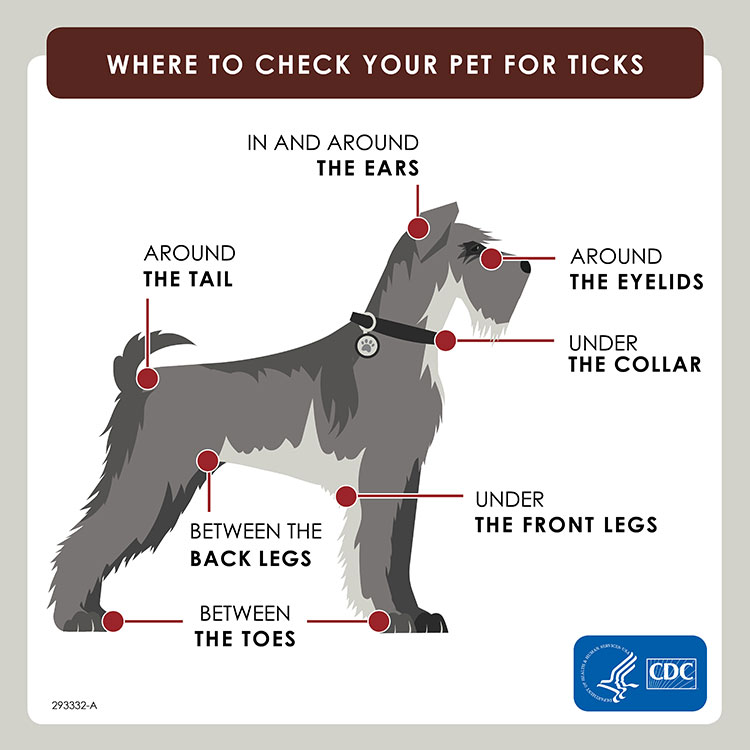Key points
- Like humans, pets can get tickborne diseases.
- Pets can also bring ticks into your home.
- Watch your pet closely for changes in behavior or appetite if you know or suspect that it has been bitten by a tick.
- Check pets daily for ticks and remove any you find to keep your pet healthy.

Why it is important to keep pets free of ticks
Dogs and cats often come into contact with ticks when they are outside. Like humans, pets can get sick with tickborne diseases. In addition, pets can transport ticks from outside the home to inside, where the ticks may then bite people. Dogs can also be infested by the brown dog tick, which occurs across the United States and is unique in that it can infest indoor spaces like homes and kennels.
Watch your pet closely for changes in behavior or appetite if you know or suspect that it has been bitten by a tick. Signs of tickborne disease may not appear for 7-21 days or longer after a tick bite. Except for Lyme disease in dogs, pets cannot be vaccinated against tickborne diseases. Talk to your veterinarian about tickborne diseases that occur in your local area, or if you are considering a Lyme disease vaccine for your dog.
Prevention tips
Check pets who go outdoors daily for ticks
Daily checks to find and remove ticks that are crawling on or biting your pets helps to keep them healthy. It also may prevent crawling ticks from getting onto and biting a person. Ticks crawling on or biting a pet can be hard to spot, especially for breeds with long and dark fur. The image below shows where ticks often are found biting on a dog.
Tip

Use a tick preventive product
Dogs are very susceptible to tick bites and tickborne diseases. Vaccines are not available for most of the tickborne diseases that dogs can get, and they don't keep the dogs from bringing ticks into your home. For these reasons, it's important to use a tick preventive product on your dog.
Note
Other tips
Talk to your veterinarian about:
- The best tick prevention products for your dog
- Tickborne diseases in your area
To further reduce the chances that a tick bite will make you or your dog sick:
- Check your pets for ticks daily, especially after they spend time outdoors.
- If you find a tick on your pet, remove it right away.
- Reduce tick habitat in your yard.
